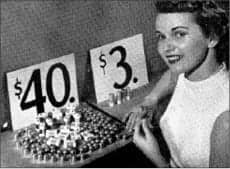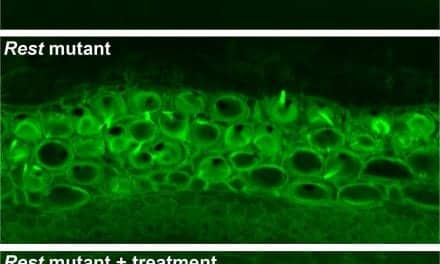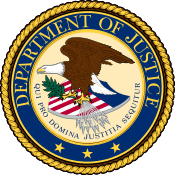By Karl Strom
Nixon’s second inauguration and Watergate, the Supreme Court’s decision on Roe vs Wade, the establishment of the EC/proto-EU, and Comet Kohoutek were the harbingers of an extremely rocky period in hearing industry history.
Big things were happening in the world of hearing care in early 1973. The following are excerpts from six of 25 industry leaders who provided forward-looking commentary in the article “1973—A Challenge and an Opportunity”1 published in the January 1973 edition of The Hearing Dealer. The quotes are followed by an editorial perspective about this era.
Marjorie Skafte, editor and publisher, The Hearing Dealer: “The business outlook for 1973 is very good. Federal government official reports show a halt in the rapid growth of inflation which faced us at the beginning of 1972. The stock market still is fluctuating but has indicated a greater strength in the later months of 1972. The war in Vietnam is still with us but the peace talks in Paris still go on…The hearing aids of 1973 make it possible for the hearing aid dealers and consultants of the world to fit each partially hearing individual with an aid specifically designed for that person’s hearing loss…Cooperation between members of the [hearing healthcare team] will be one of the major determining factors [for success in 1973].
Samuel Lybarger, president, Radioear, a unit of Esterline Corp: “Technology in the industry will provide significant improvements for the hearing aid user. An area of considerable interest will be new types of microphones [Knowles had introduced the electret/FET microphone in 1972, and LTI, which would soon become Gennum, introduced the push-pull amplifier for these mics]. Another area may be the increasing use of AVC [automatic volume control] systems….To say that everything in the industry will go along smoothly in 1973 would be wishful thinking. The dealer has been under attack by some of the most malicious propaganda the industry has ever seen. The manufacturing sector, along with many other industries, is faced with totally new concepts at the federal level. These problems will be difficult, but I believe they will be solved. The health of our industry still depends on healthy relationships with medical, audiological, and other hearing oriented professions. The industry must continue its efforts to improve these relationships. A substantial majority of professionals recognize the important role the hearing aid dealer plays in fitting and delivery of hearing aids.”
Hyman Goldberg, research director, Dyn-Aura Engineering Laboratories: “There seems to be an opportunity for expanding sales considerably because of this new market [people with 30-25 dBHL losses who would benefit from compression circuits]. Persons who have had small hearing losses falling into this category have been mostly unable to adapt to the hearing aids currently available and would welcome the compression models with open arms…These people who are candidates for compression amplification wouldn’t normally purchase a hearing aid. However, it is my feeling that this market is in addition to the already existing market…”
Robert E. Winslow, president, Dahlberg Electronics Inc [later Miracle Ear]: “Suddenly dealers who had grown accustomed to a large share of their business coming to them as ‘referrals’ are finding they have to go back to their basic function as a commercial evangelist in bringing the benefits of modern hearing aid technology to the hearing handicapped. And they find the market hasn’t changed much. The major burden of aggressively promoting the concept of a hearing aid as an essential element in hearing rehabilitation continues to be borne by the hearing aid industry. In spite of all the high flown rhetoric that has been launched in a conscious campaign to confuse the public and impugn the industry, industry sales continue to grow. Why? Because collectively we are doing more good for more hearing handicapped than the combined forces of our detractors.”
Richard J. Scott, MA, division manager, Siemens Corp: “…A hearing aid professional school could be set up through one of the established universities and award a degree in whatever we decide to call it. With the establishment of such a college, we would no longer have the problem of recruiting new people into this industry. In addition, recognition would follow to enhance our professional image and sales. This would be an important step to elimination of other groups trying to usurp our position. The industry, for all practical purposes, is about 30 years old. It is time to become responsible, responsible for our future, our actions and to the population we serve.”
Richard T. Burger, president, Qualitone [today part of Starkey]: “Dealers’ knowledge and training in pure tone, air and bone conduction with proper masking, combined with full speech, aided and unaided testing, will be an absolute necessity to avoid unfavorable publicity and to establish dealer expertise. Some dealers will have to upgrade their test equipment with increased emphasis on twin channel audiometers that are so important in establishing the advantage of binaural versus monaural fittings. The day of dispensing hearing aids with anything less is over, and dealers can become well qualified for this responsible function. The increased recognition of the value of CROS and BICROS fittings, I think, will also contribute to increased sales in 1973. Hearing aid instrumentation which enables the user to adjust frequency response to different listening situations will become more and more in demand, both from the user’s point of view and in minimizing dealer inventory. I believe that as licensing and strict codes of ethics are adhered to, we shall see a build-up of more referral business.”
Forty Years Later
There are some similarities, but far more differences, between the US hearing aid market of 1973 and 2013. Like today, the hearing industry of the early 1970s was experiencing dramatic changes in its distribution system. By 1973, dispensers were moving rapidly away from at-home dispensing (about 38% of dispensers) to in-office dispensing (58% of dispensers, with 4% split between home and office). The clinical referral system, in which audiologists identified a hearing loss then referred patients to dispensers, was gradually leading to the breakdown of the commercial hearing aid franchise (single hearing aid line) system.
As multi-line dispensing became more popular, wholesale distributors began to flourish. Additionally, some of the first “renegade audiologists” started dispensing centers during the late 60s and early 70s against ASHA’s insistence that this constituted unethical behavior (eg, see the October 1994 HR article, “Dispensing Audiologist—They Once Walked a Lonely Road” about the hearing care practices started by Jim Curran, John Schuneman, Mel Sorkowitz, and Otis Whitcomb).
Today, well over 90% of US hearing aids are dispensed from an office or retail setting, with about 5% to 10% coming from direct mail and the Internet. But, relative to franchises, some industry experts have lamented the notable decline in numbers of independent dispensing offices that are not owned by or otherwise tied to a chain network or hearing aid manufacturer. In some respects, we have gone “back to the future” in that—once VA dispensing activity (20% of all hearing aids dispensed) and online sales are taken out of the equation—true multi-line independents probably hold only a slight edge in terms of the number of distribution outlets. Likewise, we still have the same problem as that pointed out by Siemens’ Richard Scott: not enough professionals are entering the field.
Perhaps the most important difference between today and the early 1970s is in government and consumer relations. The 1970s heralded a new age of consumer activism, and some hearing aid distribution tactics—particularly high-pressure door-to-door and hotel room sales—increasingly caught the gaze of watchdog groups and government agencies. Additionally, in 1972, the US Federal Trade Commission (FTC) issued a complaint against five manufacturers regarding imposed territorial restrictions, exclusive dealing, and anti-competitive practices. It also issued a 3-day consumer “cooling off period” for door-to-door hearing aid sales.
In 1972, the Retired Professional Action Group, supported by Ralph Nader, undertook the Hearing Disability Study. However, in February 1973, the group’s director, retired diplomat Joseph E. Wiedenmayer, resigned in protest over the report’s preparation. The resulting September 1973 study—coordinated by Elma Griesel with assistance from the NYC Gray Panthers—was titled Paying Through the Ear. It soon became known in the hearing industry as “The Nader Report.” Among its contentions were that hearing aid manufacturers and dispensers maintained artificially high prices, and it recommended that consumers get a medical examination prior to obtaining hearing aids. The Associated Press quoted Wiedenmayer as stating, “[The final report] seems to confirm what I was afraid of. It would seem that such a report could—inadvertently or otherwise—only confuse or frighten the hard of hearing.”
Much of the industry’s efforts throughout the 1970s would be consumed by fending off the assaults waged by people like Nader and Senators Charles Percy and Frank Church, as well as investigations by HEW, FDA, and FTC. Wiedenmayer’s words proved prophetic: industry sales plummeted 20%, from 511,000 units in 1970 to 410,000 in 1977.
Even prior to 1973—before the real flood of negative publicity hit the media—the Hearing Aid Industry Conference (HAIC, predecessor of the Hearing Industries Association) and the National Hearing Aid Society (NHAS, predecessor of the International Hearing Society) were taking steps to improve technical training and professional conduct. For example, in 1972 a joint effort by NHAS/HAIC sponsored 20 educational workshops, and in 1973 the HAIC Industry Enhancement Program was initiated. But ultimately it took over a decade to get through this period of intense government interference—including numerous highly publicized government proceedings, 203 witnesses, 6,000 pages of documents, and 4,000 pages of comments. It wasn’t until 1985 that the FTC finally recommended its 1975 Proposed Trade Regulation Rule be terminated. All of this contributed to making the 1970s a tumultuous and divisive period of raw feelings, high-profile accusations, and what many viewed as self-destructive “turf wars” between hearing aid dispensers, audiologists, and ENTs.
There were many technical innovations in microphones (including directional mics) and amplifiers during the early 1970s, and a gradual movement away from a reliance on word-lists for the selection of hearing aids to the prescriptive fitting era using the Lybarger Half-Gain Rule, Watson & Knutson, Berger, Pascoe, Libby, etc, methods. In terms of hearing aid styles, BTEs constituted about 65% of the market, with eyeglass (16%), body (10%), and ITE (8%) aids making up the rest.
In 2012, BTEs constituted 71% of the market, with ITEs (13%), ITCs (9%), and CICs (7%) making up the rest of the devices sold. The binaural/monaural fitting rate in 1973 was probably in the range 20%/80% (the binaural fitting rate in 1979 was 27%). Today, the binaural/monaural fitting rate is almost exactly reversed: 80%/20% favoring binaural.
Even if you’re a romantic or prone to fits of nostalgia, you wouldn’t want to return to the dispensing world of the 1970s. But it was a time of seminal change for the industry, technology, and the professions. —KES
Reference
1. Skafte MD. 1973—A challenge and an opportunity. HAIC member company executives look ahead to 1973. Hearing Dealer. 1973;24(1):10-15,29.

|
March 1953 “The big question regarding transistors [and the inevitable demise of vacuum-tube hearing aids] which has been on virtually every dealer’s mind is: ‘What effect will reduced battery sales have on my business?’” March 1953 HD Editor Bob Edgell |
|
|
|

|
March 1963 Maico introduces its MA-10 audiometer. March 1963 HD |
|
|
|

|
March 1973 Andy Rihs (left) and Beda Diethelm (right) of Elektro Akustik, Zurich, and Ralph Campagna of RCI (middle) strike a deal in which RCI-Phonak hearing aids are to be distributed in the United States. March 1973 HD |
|
|
|

|
March 1983 Bob Hope (left) with BHI Executive Director Joe Rizzo discuss an upcoming PSA starring Hope. March 1983 Hearing Instruments |
|
|
|

|
March 1993 Mike Jones, Bill Austin, Jerry Ruzicka, and Dale Thorstad celebrate Starkey’s 25th anniversary. March 1993 HI |
|
|
|

|
March 2003 Brothers Mike & Jim Feeley announce the introduction of the Sebotek PAC, which would become the first commercially popular RIC hearing aid. March 2003 HR |





